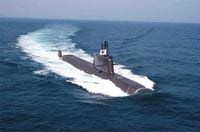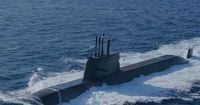In a significant move to enhance its military capabilities, Canada is considering an unsolicited proposal from three South Korean companies to upgrade its aging defense systems. This ambitious initiative, valued at over $20 billion, includes plans for new submarines, artillery, and armored vehicles, marking a pivotal shift in Canada’s defense procurement strategy amid changing geopolitical dynamics.
The proposal, spearheaded by Hanwha Ocean, Hyundai Heavy Industries, and Hanwha Aerospace, was presented to the Canadian government in early March 2025. It promises to deliver four advanced KSS-III submarines, capable of operating under ice, by 2035—far ahead of Canada’s current timeline for replacing its aging Victoria-class submarines. These submarines are equipped with an air-independent propulsion system that allows for extended submerged operations, a crucial feature for Canada’s vast Arctic waters.
According to a report by CBC News, the full cost of the deal could reach as high as $25 billion, depending on the specifics of the upgrades and the establishment of maintenance facilities in Canada. This aspect of the proposal aims to create local employment opportunities while bolstering Canada’s defense industrial base. The South Korean companies are keen to foster a long-term partnership rather than a one-off transaction. "We do not think of this as a single, one-time deal between two countries. It's not a transaction for us," stated South Korean Deputy Defense Minister Hyunki Cho. "If we do succeed in making the sale, then we are going to try and give our effort toward strengthening the capabilities of Canada’s defense industry, as well as furthering defense cooperation."
The backdrop of this proposal is a complex geopolitical landscape, particularly strained relations between Canada and the United States. Following U.S. President Donald Trump’s tariffs and critical remarks towards Canada, many Canadians have begun to question their reliance on American defense suppliers. The recent federal election saw the Liberal Party, led by Prime Minister Mark Carney, advocating for a review of military procurement strategies, which could lead to significant changes in how Canada sources its defense equipment.
Canada has expressed interest in upgrading its naval fleet, which currently relies on four Victoria-class submarines that have been in service since the early 2000s. The government’s previous plan aimed to have only one new submarine operational by 2035, making the South Korean offer particularly appealing. The KSS-III submarines not only promise enhanced maneuverability under ice but also feature advanced stealth capabilities and the ability to launch land-attack cruise missiles.
In addition to the submarine proposal, Hanwha Aerospace has presented a billion-dollar plan to upgrade Canada’s artillery and armored vehicles. This includes mobile howitzers and other advanced systems that have gained recognition for their performance and affordability. The South Korean companies are positioning themselves as viable alternatives to traditional defense suppliers from the United States and Europe, particularly as Canada looks to diversify its defense procurement.
As Canada navigates its military needs, it faces pressing operational readiness deficiencies. The Canadian Armed Forces have been criticized for their outdated equipment and lack of modern capabilities. Lt.-Gen. Mike Wright, the chief of the Canadian Army, noted that the army is currently managing 47 capital projects but is still falling short in key areas, especially in terms of mobile artillery and rocket systems. "The army we have now is not the army that we need for the future," he stated, underscoring the urgency of modernizing Canada’s military capabilities.
South Korea’s defense industry has recently gained prominence on the global stage, particularly following substantial contracts with Poland, which has signed deals worth between $16 billion and $22 billion since 2022 for various military equipment. This success has bolstered South Korea’s reputation as a reliable arms supplier, as highlighted by Seok Jong-gun, South Korea's minister of defense acquisition program administration. He remarked, "Prior to the large contract signed with Poland, Korea's reputation as a defense exporter was not that large. However, with the signing of a massive contract with Poland, many countries have found that Korea is able to supply quality products in a timely manner."
The Canadian government’s interest in the South Korean proposal reflects a broader trend among NATO allies to seek alternatives to traditional defense suppliers. As European countries grapple with supply chain challenges and the ongoing conflict in Ukraine, many are looking to South Korea for quick and reliable military solutions. This shift is not just a matter of procurement but also a strategic realignment in response to changing security dynamics.
In light of these developments, Canadian Defense Minister Bill Blair has indicated that the government is exploring alternatives to the F-35 fighter program, to which Canada has committed $19 billion. While Canada is effectively locked into purchasing the first 16 F-35s, there is potential to cancel subsequent orders in favor of other options, such as the Saab Gripen F-39 or South Korea’s FA-50 aircraft, both of which may offer more cost-effective solutions.
The ongoing discussions with South Korean companies represent a significant opportunity for Canada to enhance its military capabilities while fostering a new defense partnership. As the geopolitical landscape continues to evolve, the outcome of these negotiations could reshape Canada’s defense strategy for years to come.
In conclusion, the unsolicited proposal from South Korea marks a crucial juncture for Canada’s defense procurement. As the government weighs its options, the potential benefits of this partnership—ranging from advanced military capabilities to local employment opportunities—could play a pivotal role in redefining Canada’s approach to national security.


